
Car Care
Get professional-quality car cleaning products at affordable prices with our exclusive range of Pro-Kleen detailing products. With everything from best-selling snow foam to premium quality carnauba wax to engine degreaser, we've got everything you need to get your car looking like new once again.
-
Snow Foam and Pre-Wash
-
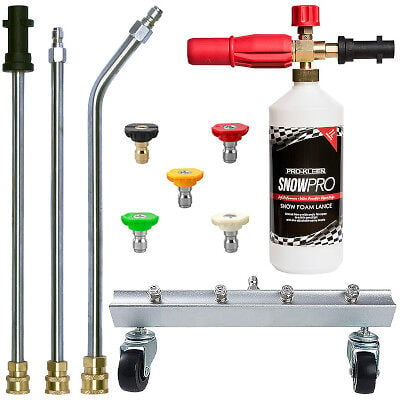 Chassis Cleaner
Chassis Cleaner
-
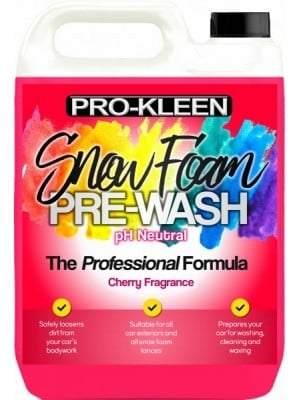 PH Neutral Snow Foam
PH Neutral Snow Foam
-
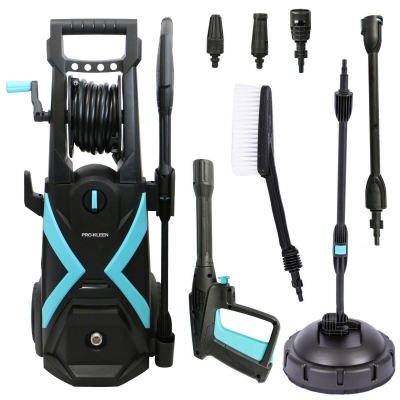 Pressure Washer Kits
Pressure Washer Kits
-
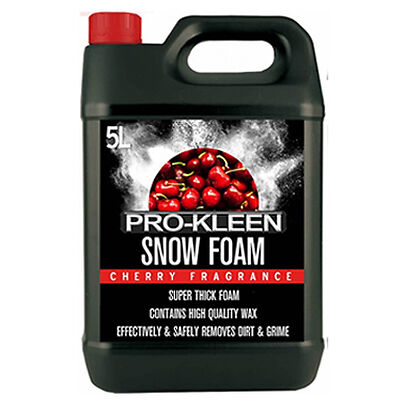 Snow Foam
Snow Foam
-
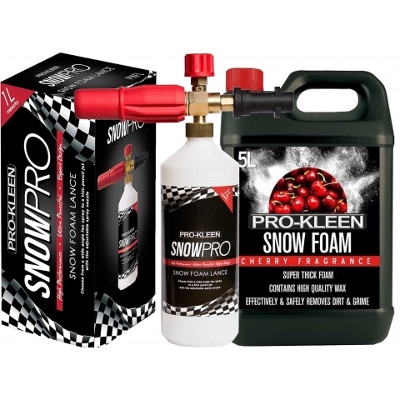 Snow Foam Lances
Snow Foam Lances
-
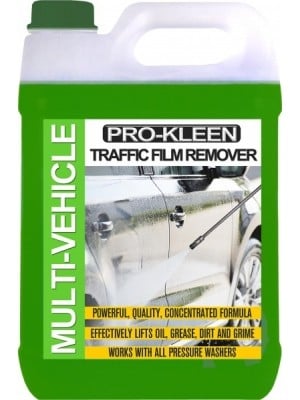 Traffic Film Remover
Traffic Film Remover
-
Wash and Wax
-
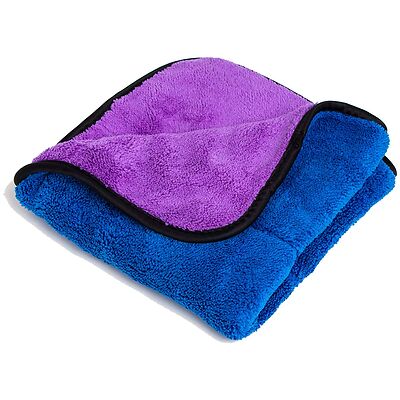 Microfibre Cloths
Microfibre Cloths
-
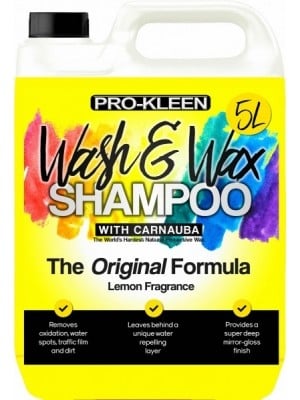 PH Neutral Car Shampoo
PH Neutral Car Shampoo
-
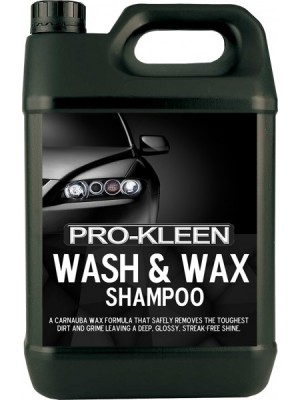 Wash & Wax Vehicle Shine
Wash & Wax Vehicle Shine
-
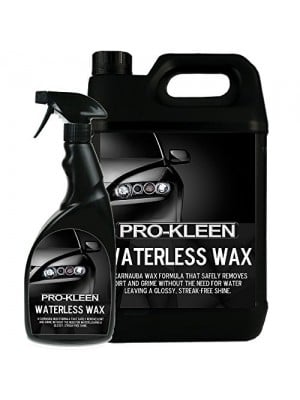 Waterless Wash and Wax
Waterless Wash and Wax
-
Post-Wash and Detailing
-
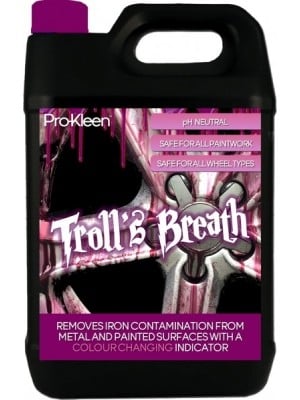 Alloy Wheel Cleaner
Alloy Wheel Cleaner
-
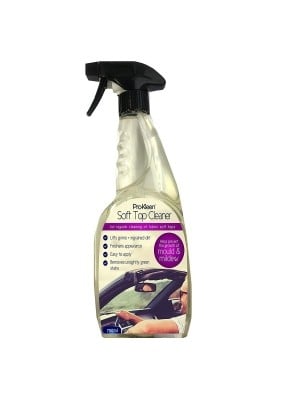 Soft Top Cleaner
Soft Top Cleaner
-
 Tar Remover
Tar Remover
-
pH Neutral Car Cleaning
-
 PH Neutral Car Shampoo
PH Neutral Car Shampoo
-
 PH Neutral Snow Foam
PH Neutral Snow Foam
-
Interior Cleaning
-
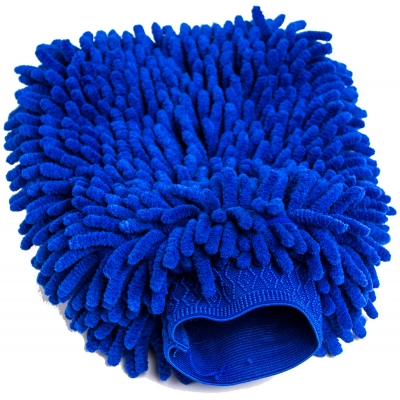 Valeting Supplies
Valeting Supplies
Car Care and Detailing
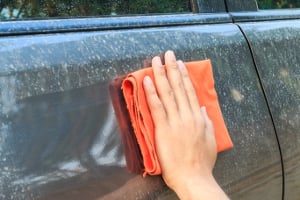 You don’t have to be a petrolhead to understand why detailing your car is so important. Not only does it feel great to see your car looking like new again, but it can also help prolong the lifespan of your vehicle and reduce the risk of breakdowns. Our extensive range of car care products lets you take care of every part of your vehicle, inside and out. This buyer’s guide will help you choose the products that fit you best.
You don’t have to be a petrolhead to understand why detailing your car is so important. Not only does it feel great to see your car looking like new again, but it can also help prolong the lifespan of your vehicle and reduce the risk of breakdowns. Our extensive range of car care products lets you take care of every part of your vehicle, inside and out. This buyer’s guide will help you choose the products that fit you best.
pH Neutral Car Care – Do You Need It?
pH neutral car detailing products are very popular among petrolheads. As they don’t contain any alkaline cleaning chemicals, they’re generally considered to be better for use on classic cars with very sensitive paintwork, or on alloy wheels with special lacquering and coatings. This begs the question: do you need pH neutral car care?
The chances are that you probably don’t. It’s true that classic cars - or other expensive motors with sensitive paintwork - benefit from pH neutral products, but the vast majority of other cars are not affected at all by regular car cleaning chemicals. Most domestic car detailing ranges are only very slightly alkaline anyway, so unless you’ve spent a lot of money on expensive alloys or on a special paint job you need to take extra care of, you’ll be fine with or without pH neutral car care.
Car Pre-Washing with Snow Foam
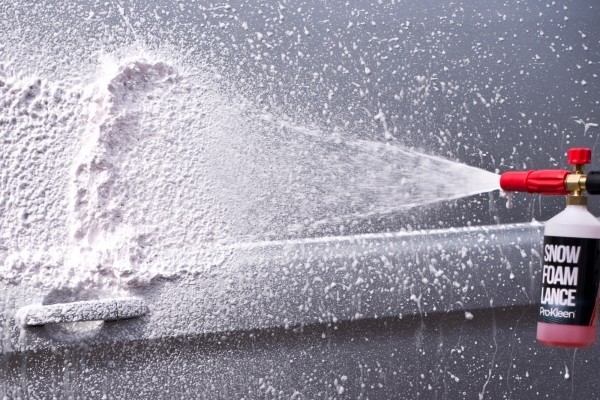 Pre-washing is an important step that no-one should skip. It’ll loosen a lot of the dirt on your car and make your follow-up contact wash much quicker and easier. More importantly, by breaking down a lot of the dirt on your car, it reduces the risk of scratching your paintwork when you shampoo it. This is because, if you go straight to washing a dirty car with a cloth or a sponge, you can easily scrape the tiny particles of dirt against your paintwork.
Pre-washing is an important step that no-one should skip. It’ll loosen a lot of the dirt on your car and make your follow-up contact wash much quicker and easier. More importantly, by breaking down a lot of the dirt on your car, it reduces the risk of scratching your paintwork when you shampoo it. This is because, if you go straight to washing a dirty car with a cloth or a sponge, you can easily scrape the tiny particles of dirt against your paintwork.
Most pre-washing is done using snow foam. It’s a detergent that you spray onto your car to create a thick, clingy cleaning foam. This clingy foam increases the amount of time the cleaning agents are in contact with the dirt on the surface of your car, meaning you can simply rinse most of the grime away. Usually, a combination of a thick foam and a powerful detergent inside the foam results in an effective pre-wash that gets rid of most – if not all – of the dirt on your car.
Our range of snow foams are popular among amateur and professional detailers alike thanks to their combination of satisfyingly thick foam and superb cleaning power. They’re available in a range of fragrances and colours to make your foam session a little more enjoyable, and you also have the option of a pH neutral snow foam if your car has sensitive paintwork.
Wash and Wax Shampoos
A good wash and wax is vital for any car, new or old – it’s what gives your paintwork that mirror shine you’re looking for. If you’ve properly snow foamed your car, this step should be easy! A good wash and wax will clean, shine, and protect your car all at once, leaving your car protected against scratches and blemishes in the future.
There are two different types of wash and wax treatment. The first and most common is a regular car shampoo, which needs to be mixed with a bucket of water before use. Increasingly popular, though, are waterless wash and wax treatments. These are essentially pre-mixed shampoos that can simply be sprayed on and wiped, making them a quick and easy way to get your car gleaming.
Which is better depends entirely on you. If you’re serious about your car detailing, regular shampoo is probably slightly better as you can mix it however you like to get the perfect results. However, if you just want a quick and easy treatment to lift your car’s appearance, a waterless wash and wax spray is worth a look.
Post-Wash – Waxing
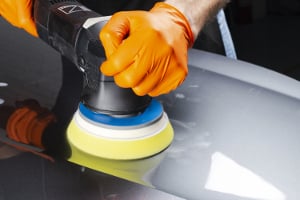 Anything worth doing is worth doing twice. This saying applies to waxing your car more than anywhere else! While most car shampoos do contain some form of wax, it’s always a good idea to add another layer or two of wax onto your paintwork for even better results. Building up layers of wax on your car not only makes it look shinier than ever, but it’ll also mean you’re more protected against water marks, dirt, and scratches in future.
Anything worth doing is worth doing twice. This saying applies to waxing your car more than anywhere else! While most car shampoos do contain some form of wax, it’s always a good idea to add another layer or two of wax onto your paintwork for even better results. Building up layers of wax on your car not only makes it look shinier than ever, but it’ll also mean you’re more protected against water marks, dirt, and scratches in future.
There are two main types of wax you should look out for; carnauba wax and polymer wax. Carnauba is natural wax taken from a species of palm tree, and is it’s called “the Queen of waxes”! This nickname is well-earned, as carnauba makes any paint job look better than ever, with rich, deep colours. Polymer, on the other hand, is a man-made wax. It doesn’t bring out the vivid colours in your paintwork the way carnauba does, but it is much softer and easier to work onto your car. This makes buffing it in or out much easier.
Again, which option is best depends on how serious you are about car care. Carnauba provides better results and offers better protection, but polymer is more affordable and easier to use if you want to give your car a quick lift. Some wax treatments use a blend of carnauba and polymer which, as you might expect, offers a compromise between the two!
How to Clean Tar Spots and Other Stubborn Residues
Unfortunately, there are some things that even the most expensive car shampoos won’t clean off your car. Tar spots, tree sap, and other sticky residues can cling to your paintwork even after a wash as most shampoos simply aren’t designed to break them down. Finding a shampoo that’s strong enough to clean these stubborn blemishes off your car, but not so caustic that it’ll damage your wax sealants is near-impossible, so you’ll need to pick up a special tar spot remover to tackle them.
Pro-Kleen’s Tar-Dah! tar spot remover ticks every box as far as tar spot removal goes; it’s fast-acting and effective while still being safe for use on any car paintwork, wheels, and plastic parts. Thanks to its blend of hydrocarbons and anionic detergents, it breaks down grease, oily residues, tar, and tree sap on a chemical level, leaving your car’s paintwork clean and blemish-free.
Wheel Cleaning
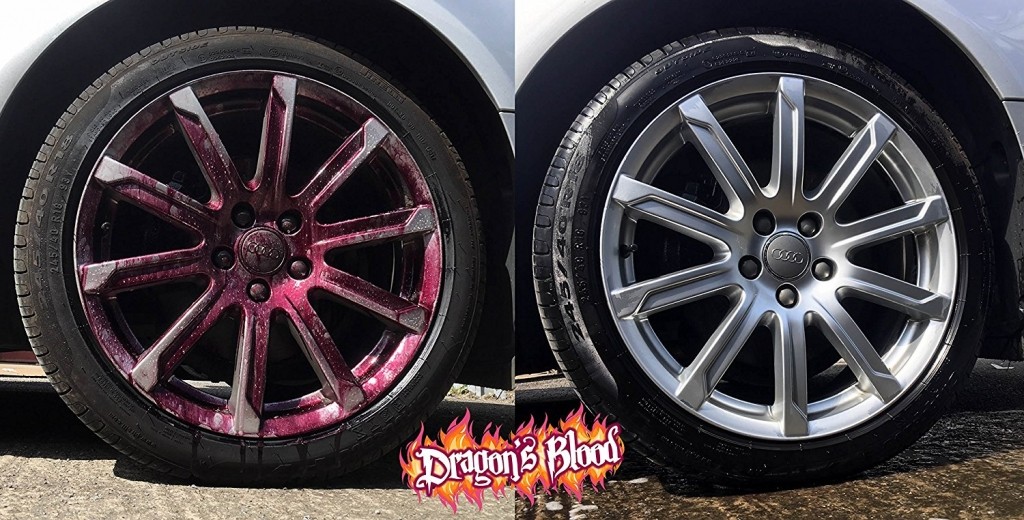 You can spend all day cleaning your car and buffing the paintwork to perfection, but drab and discoloured wheels can still drag the appearance of your car down. Sometimes, though, no amount of shampooing will get your wheels looking the way you want them to. This isn’t down to any fault of yours or the shampoo you’re using – it’s because of something called iron fallout.
You can spend all day cleaning your car and buffing the paintwork to perfection, but drab and discoloured wheels can still drag the appearance of your car down. Sometimes, though, no amount of shampooing will get your wheels looking the way you want them to. This isn’t down to any fault of yours or the shampoo you’re using – it’s because of something called iron fallout.
Iron fallout is caused by tiny particles of iron that wear away from your brake pads. Over time, these particles will cling to your wheel trims, causing them to look dull and discoloured. If not properly cleaned up, the iron particles will oxidise to form iron oxide (also known as rust!), giving your wheels a rancid yellow tint. Unlike most other dirty residues, these iron particles can’t simply be washed away – in fact, attempting to do so can only make things worse. This is because the iron particles are uneven and jagged, and wiping them with a mitt or a cloth can cause them to scrape over the surface of your car, leaving swirls and streaks.
It’s worth noting that iron contamination can affect all parts of your car, it just tends to be more noticeable on wheels. What this all means is that you need a cleaning product that chemically removes iron particles from your wheels, but which can also be used on other parts of your car where necessary. That’s why we recommend Pro-Kleen’s famous Troll’s Breath and their more powerful Dragon’s Blood – they’re specially formulated to be used on even the most severe iron contamination anywhere on your car. Both are pH neutral, so they can be used on any kind of wheel trim or alloys without damaging sealants or lacquering, as well as paintwork, glass, plastics, rubber, and more.
Tyre Dressing
As the finishing touch to a thorough detailing session, many people like to get their tyres looking a deep, glossy black. This provides a nice contrast to your gleaming wheel trims and paintwork, and makes your car look like it’s just rolled off the assembly line!
Tyre dressings are designed to do just that – they coat your tyres in a black substance that covers any dirt that might be clinging to them. This doesn’t affect the performance of your tyres, but it does make them look very nice! When looking for tyre dressing, you want one that’s thick, with a good self-levelling formula. This allows you to evenly coat your tyres for a professional finish. You should also look at how long it takes to dry – the longer your tyres take to dry, the more dirt will end up stuck to them while you’re waiting for them to dry. This can spoil the hard work you’ve put into cleaning your wheels, so it’s important to choose a fast-drying tyre dressing like Pro-Kleen’s Tyre Goo.
Car Care FAQ
Should I Use Microfibre Cloths or Sponges to Wash My Car?
 Unless you’re willing to splash out on an expensive detailing sponge, a microfibre cloth or wash mitt will be better for your car. This is because, when you rub a regular flat sponge against your car’s dirty paintwork, the tiny particles of dirt are essentially trapped between the sponge and the car. This means they’ll end up scraping along your paintwork, causing streaks and swirls (which are actually tiny scratches). When using a cloth or a mitt, the particles of dirt are instead picked up and moved away from your paintwork by the nap in the cloth, meaning they don’t scratch your car. It is possible to find special detailing sponges that don’t leave streaks, but they tend to be more expensive than a wash mitt or cloth that’ll do just as good a job.
Unless you’re willing to splash out on an expensive detailing sponge, a microfibre cloth or wash mitt will be better for your car. This is because, when you rub a regular flat sponge against your car’s dirty paintwork, the tiny particles of dirt are essentially trapped between the sponge and the car. This means they’ll end up scraping along your paintwork, causing streaks and swirls (which are actually tiny scratches). When using a cloth or a mitt, the particles of dirt are instead picked up and moved away from your paintwork by the nap in the cloth, meaning they don’t scratch your car. It is possible to find special detailing sponges that don’t leave streaks, but they tend to be more expensive than a wash mitt or cloth that’ll do just as good a job.
How Do I Get Thick Snow Foam?
Getting thick snow foam is like riding a bike – it takes a bit of practice, but once you get it right, you’ll be set for life! Thick snow foam can be affected by a number of things, including the quality of the foam you’re using, the dilution of your foam, the settings of your snow foam lance, the hardness of your water, and spraying on a wet car instead of a dry one.
How Long Should I Let My Snow Foam Dwell For?
This depends on the foam you’re using, but 5-10 minutes should usually be enough.
Should I Apply Snow Foam on a Wet or Dry Car?
Always apply snow foam onto a dry car. Remember, when you apply snow foam, you’re essentially diluting it twice already – once in your lance bottle and once in the jet stream of your pressure washer. Spraying it onto a wet surface dilutes it a third time, meaning it’ll likely run straight off your car before it has any chance to work properly.
Can I Use Shampoo with a Pressure Washer?
We wouldn’t recommend it. Pressure washers are good for products you need to rinse off – like snow foam – but shampoo usually needs to be wiped off or agitated in some way to lift off dirt before it’s rinsed.
How Should I Clean My Soft Top Roof?
 We wouldn’t recommend using snow foam or shampoo on a soft top roof unless you want to ruin the fabric! Instead, pick up some dedicated soft top cleaner and use that.
We wouldn’t recommend using snow foam or shampoo on a soft top roof unless you want to ruin the fabric! Instead, pick up some dedicated soft top cleaner and use that.
How Often Should I Clean My Car?
This is entirely up to you, of course, but for most people, we recommend you wash and wax your car every 3 – 8 weeks. This will replenish the layer of protective wax on your car before it wears away.
How Many Layers of Wax Should I Put on My Car?
Again, this is up to you. Generally, two coats of wax should be more than enough for most cars, but you can apply more or less than this as you see fit.


